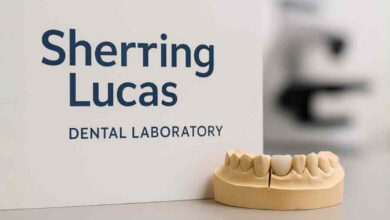Catey Bunce: A Leading Force in Ophthalmic Statistics and Research Excellence

Catey Bunce is widely recognised as one of the most influential figures in the world of ophthalmic statistics. Her contributions have transformed the way statistical science is applied within the field of eye and vision research. With a background deeply rooted in both mathematics and medicine, she has become a vital bridge between clinical experts and data-driven researchers. Her expertise ensures that clinical findings are not only statistically sound but also meaningful for patient outcomes.
Early Education and Academic Foundation
Catey Bunce’s academic journey reflects her lifelong commitment to excellence and analytical precision. She completed her undergraduate and postgraduate degrees in statistics, developing a strong foundation in research methodology and data analysis. Her educational background provided the essential tools to interpret complex datasets and to identify patterns that could improve public health outcomes.
She went on to achieve higher degrees, including a Doctor of Science (DSc), a recognition reserved for individuals who have made long-term, significant contributions to scientific research. This achievement established her as a leading academic in applied medical statistics. From an early stage, she realised that statistics is not merely about numbers but about improving lives through evidence-based medicine.
Professional Career and Institutional Roles
Catey Bunce’s career path has been defined by her exceptional leadership within academic and clinical research institutions. She has worked across prominent organisations such as the London School of Hygiene and Tropical Medicine and Moorfields Eye Hospital, two of the most respected centres for medical and eye research in the world.
At these institutions, she contributed to clinical trials, public health studies, and data interpretation for ophthalmic diseases. Her ability to combine advanced statistical modelling with real-world medical challenges made her a sought-after expert. She later became a group leader within the National Institute for Health Research (NIHR) Statistics Group, specifically leading the Ophthalmology Research Section.
This leadership role has enabled her to guide teams of statisticians and clinicians in developing more accurate, transparent, and ethical research practices. Her vision for this department has always been focused on improving how data is collected, analysed, and used to inform public health decisions and treatment innovations.
Areas of Expertise and Research Interests
Throughout her career, Catey Bunce has maintained a strong focus on ophthalmology — the study of the eye, vision, and related disorders. Her work spans several key areas that directly influence both medical research and clinical practice.
Clinical Trials in Ophthalmology
One of her major areas of expertise is the design and analysis of clinical trials related to eye health. She has worked on numerous studies investigating conditions such as glaucoma, cataracts, diabetic retinopathy, and macular degeneration. Her meticulous approach ensures that these trials are statistically robust, reproducible, and transparent.
Epidemiology and Visual Impairment
Bunce has also made significant contributions to epidemiological studies that investigate the causes and prevalence of blindness and visual impairment. Through her work, health authorities gain valuable insights into the burden of eye disease on populations, helping them allocate resources effectively and improve patient care programmes.
Statistical Methodology in Medicine
Apart from her direct medical research, she has authored many methodological papers that aim to improve the statistical techniques used in ophthalmology. Her “Ophthalmic Statistics Notes” series, written for clinicians and researchers, offers guidance on how to choose appropriate statistical models, avoid common pitfalls, and interpret findings correctly. This series has become an essential reference for anyone conducting research in eye care.
Publications and Contributions to Scientific Literature
Catey Bunce has authored and co-authored hundreds of peer-reviewed publications across medical and statistical journals. Her research output demonstrates both depth and diversity — covering trial design, outcome measurement, diagnostic accuracy, and public health data analysis.
Many of her papers have become foundational reading for professionals in the field of ophthalmology. These works have received thousands of citations globally, highlighting the influence and reliability of her contributions. Her research not only informs academic circles but also has practical implications for hospitals, clinics, and policy-making bodies.
Her commitment to scientific transparency is evident in her emphasis on open methodology. She promotes reproducibility — ensuring that other researchers can validate and build upon previous findings. This approach strengthens the credibility of medical research as a whole.
Role as a Statistical Ambassador
Beyond academia, Catey Bunce plays a vital role as a Statistical Ambassador for the Royal Statistical Society. In this capacity, she advocates for the ethical and accurate use of data across health sciences. She encourages collaboration between statisticians and clinicians, believing that interdisciplinary teamwork leads to more reliable conclusions.
Her outreach includes workshops, talks, and contributions to professional training, where she helps early-career researchers understand the importance of data quality and transparency. Her passion for teaching and mentoring ensures that the next generation of statisticians inherits a strong sense of responsibility toward integrity in research.
Impact on Ophthalmology and Medical Practice
Catey Bunce’s impact on ophthalmology is profound. Her work has improved how clinical trials are structured, how visual data is measured, and how treatment effectiveness is reported. Many of her studies have influenced global guidelines on eye care, particularly in diseases like glaucoma and cataract.
Her statistical models have also guided how medical devices and diagnostic tools are evaluated. By ensuring that the data behind these innovations is reliable, she has indirectly contributed to improving patient safety and clinical outcomes. In many ways, her influence extends far beyond academic journals — it reaches into hospitals, health systems, and government health departments worldwide.
Promoting Ethical and Transparent Research
A cornerstone of Bunce’s philosophy is research integrity. She consistently highlights the importance of ethical standards in data collection and reporting. In an age where data manipulation and selective reporting can distort scientific truth, her insistence on transparency and accountability sets a powerful example.
She also promotes gender equity and diversity within research communities, ensuring that opportunities for professional growth are accessible to everyone regardless of background. Her leadership style encourages collaboration, empathy, and shared learning.
Recognition and Awards
Given her outstanding achievements, Catey Bunce has earned several recognitions and honours. Her election to leadership positions within professional associations is a reflection of her peers’ respect. She is also frequently invited to serve as a reviewer, advisor, or keynote speaker at international conferences.
These honours acknowledge her exceptional skill in translating complex statistical concepts into actionable insights that benefit the wider scientific community. Her career is a testament to how dedication, knowledge, and integrity can create long-lasting change in a specialised scientific domain.
Future Directions and Continuing Influence
Looking ahead, Catey Bunce’s work continues to evolve with new technological advances. As artificial intelligence and big data reshape modern healthcare, her expertise in statistical reasoning remains crucial. She advocates for cautious and ethical use of machine learning models in medicine, emphasising that algorithms must be transparent, validated, and fair.
In the coming years, she is likely to play a pivotal role in guiding the responsible integration of AI into ophthalmology. Her balanced perspective — one that respects both innovation and evidence — ensures that progress does not come at the cost of scientific integrity.
Personal Philosophy and Legacy
At the core of Catey Bunce’s career lies a deep respect for truth and accuracy. She believes that good research is about asking the right questions and being honest about the answers, even when results are uncertain or unexpected. Her humility, precision, and patience have earned her admiration across academic and clinical communities alike.
Her legacy will not only be the papers she has written or the studies she has led but also the culture of scientific rigour she has helped create. Through her mentorship, many emerging researchers have learned to approach statistics not as a dry mathematical exercise but as a language for understanding and improving human health.
Conclusion
Catey Bunce stands as a shining example of how one person can profoundly influence both a scientific discipline and the healthcare landscape it serves. Her career combines deep statistical expertise with a strong ethical compass and an unwavering dedication to improving vision research. Through her teaching, leadership, and collaboration, she continues to raise the standards of ophthalmic research across the world.
Her name has become synonymous with reliability, transparency, and innovation in medical statistics. As the field continues to grow and adapt to new challenges, her contributions will remain a guiding light for researchers striving to turn data into knowledge — and knowledge into better health for all.



